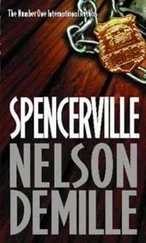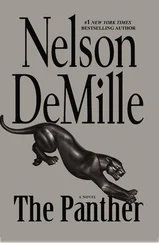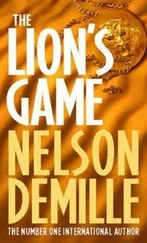Nelson DeMille - Mayday
Здесь есть возможность читать онлайн «Nelson DeMille - Mayday» весь текст электронной книги совершенно бесплатно (целиком полную версию без сокращений). В некоторых случаях можно слушать аудио, скачать через торрент в формате fb2 и присутствует краткое содержание. Жанр: Триллер, на английском языке. Описание произведения, (предисловие) а так же отзывы посетителей доступны на портале библиотеки ЛибКат.
- Название:Mayday
- Автор:
- Жанр:
- Год:неизвестен
- ISBN:нет данных
- Рейтинг книги:4 / 5. Голосов: 1
-
Избранное:Добавить в избранное
- Отзывы:
-
Ваша оценка:
- 80
- 1
- 2
- 3
- 4
- 5
Mayday: краткое содержание, описание и аннотация
Предлагаем к чтению аннотацию, описание, краткое содержание или предисловие (зависит от того, что написал сам автор книги «Mayday»). Если вы не нашли необходимую информацию о книге — напишите в комментариях, мы постараемся отыскать её.
Mayday — читать онлайн бесплатно полную книгу (весь текст) целиком
Ниже представлен текст книги, разбитый по страницам. Система сохранения места последней прочитанной страницы, позволяет с удобством читать онлайн бесплатно книгу «Mayday», без необходимости каждый раз заново искать на чём Вы остановились. Поставьте закладку, и сможете в любой момент перейти на страницу, на которой закончили чтение.
Интервал:
Закладка:
Carl Fessler tapped his pencil on the digital readout of the Total Airframe Temperature gauge. He was beginning another round of required entries into the portable backup computer, entries of their mid-flight aircraft performance numbers. Records of every sort, to be fed into the company mainframe computer and never to be seen again.
The Total Airframe Temperature needle sat on 189 degrees Fahrenheit, closing in on the red-line mark of 198. The operational limits at 62,000 feet were always a matter of temperatures and pressures, reflected Fessler. The Straton transport’s skin was not to exceed its designated limit. If necessary, Fessler would tell the Captain and he would slow the ship down. The environment they operated in was hostile enough. Don’t press it. “What’s the capital of Japan?” he asked without looking up from his paperwork.
McVary glanced over his shoulder. “Mount Fuji?”
“Close,” said Fessler. “But not close enough for you to try to land on it.” Fessler entered the final figures into the computer and looked up at the windshield. Just beyond the glass and the aluminum-and-titanium alloy skin of the 797 was a slipstream of air moving so fast that anything its friction touched was instantly heated to over 175 degrees Fahrenheit. Yet the actual temperature of the atmosphere outside was 67 degrees below zero. The air itself was thin enough to be nonexistent. Less than one pound per square inch-one-fifteenth the normal sea-level amount. The oxygen composition was less than one percent. The mass was unbreathable anyway, since the pressure was too low to force the few oxygen molecules into the lungs. Subspace, reflected Fessler. Subspace was not what he’d been hired for five years before. But here he was.
McVary suddenly sat erect in his seat and put down his coffee. “Skipper, what’s that?” He pointed to his right front. There was a small dot on the horizon-hardly more than a speck against the cockpit glass.
Stuart sat up and put his face closer to the windshield.
Fessler put down his coffee and turned in his seat to look.
They watched the dot on the right side of the windshield. It was moving across their front, apparently at an oblique angle to their flight path. It was growing slightly, but not alarmingly. It did not-at least for the moment-pose any threat of collision.
McVary relaxed a bit. “Must be a fighter. Some military jet jockey horsing around.”
Stuart nodded. “Right.” He reached into his flight bag and pulled out a pair of binoculars, a good set of Bausch amp; Lomb that he had bought in Germany many years before. He carried it as an amusement. He used to watch ships, planes, and faraway coastlines when he flew low enough to see something worth looking at. He’d meant to take them out of his bag long ago, but habit and nostalgia-he’d seen a good deal of the world through them-had postponed the retirement of the glasses. He adjusted the focus knob. “Can’t make it out.”
“Maybe it’s a missile,” McVary said. “A cruise missile.” He had been an Air Force pilot, and his mind still worked in that direction.
Fessler half stood near his console. “Would they shoot it up here?”
“They’re not supposed to,” said McVary. “Not near commercial routes.” He paused. “We did deviate pretty far south today.”
Stuart twisted the focus knob again. “Lost it. Wait… Got it…”
“Can you make it out, Skipper?” asked McVary, a slight edge to his voice.
“Funny-looking. Never seen anything like it. Some sort of missile, I think. I can’t tell. Here.” He handed the binoculars to McVary. “You look.”
The ex-fighter pilot took the glasses. Even without them he could see that the object had gotten closer. To the naked eye it appeared to be a sliver of dark-colored metal against the blue sky. He raised the glasses and adjusted them. There was something very familiar about that object, but he couldn’t place it. It was hard to get a perspective on its size, but instinctively he knew it was small. “Small,” he said aloud. “And at that speed and these altitudes it could only be military.”
Fessler stepped closer to the front windshield. “Whose military?”
McVary shrugged as he continued to scan. “The Martian Air Force, Carl. How the hell do I know?” He leaned farther forward. For a brief, irrational moment he thought he might be seeing the opening salvo of an atomic war. The end of the world. No. It was too low, too small, and going toward the open Pacific. “It’s got to be a jet fighter… but
…”
“If it gets closer, we’ll turn,” Stuart said. Altering the course of a supersonic transport was no easy matter, however. At cruise speed it would take him nearly four-and-a-half minutes to turn the 797 around, and during that time the ship would have flown sixty-seven miles. At any greater rate of turn, the passengers would be subjected to an unacceptable level of positive Gs. Those who were standing would be thrown to the floor. Those seated would be unable to move. He flipped on the switch for the cabin seat-belt sign, then turned in his seat and wrapped his hands around the control wheel. His left thumb was poised over the autopilot disengage button. He looked at the object on the horizon, then at his crew. The cockpit had changed quickly. It was always that way. Nothing to do, or too much to do. He glanced at his relief copilot, who was still out of his seat and looking out the window. “Fessler. Who played opposite Cary Grant in North by Northwest?”
“I don’t know.”
“Then get back in your seat and do something you do know. Sit down, strap in, get ready.”
“Yes, sir.”
Small beads of perspiration had begun to form on the Captain’s forehead. “I’m going to turn,” he said, but still did not press the autopilot release button on his control wheel. Alan Stuart-like most commercial pilots-was reluctant to alter course, speed, or altitude unless absolutely necessary. Jumping headlong into an unneeded evasive action was a student pilot’s stunt.
The fourth being in the cockpit-the autopilot-continued to maintain the 797’s heading and altitude.
The object was easily visible now. It was becoming apparent to Stuart that the mysterious missile was not on a collision course with the Straton. If neither of the crafts altered course, the object would pass safely across their front. Captain Stuart relaxed his grip on the control wheel but stayed ready to execute a turn toward the north if the object’s flight path changed. He glanced at his wristwatch, which was still set to San Francisco time. It was exactly eleven o’clock.
McVary saw the object clearly now in the binoculars.
“Oh, Christ!” His voice was a mixture of surprise and fear.
Captain Stuart experienced a long-forgotten but familiar sensation in his stomach. “What, what…?”
“It’s not a missile,” said McVary. “It’s a drone. A military target drone!”
At 10:44 A.M. San Francisco time, the helmsman of the nuclear-powered aircraft carrier Chester W. Nimitz made a three-degree course correction to starboard. Positioned 2,000 yards astern of the Nimitz were the cruiser Belknap and the destroyers Coontz and Nicolas. Their helmsmen also made appropriate corrections. The fleet steered a steady course of 135 degrees, making a headway of 18 knots. They rode serenely over the mid-Pacific, their position 900 miles north of Hawaii. The midmorning skies were clear and the air was warm. The weather forecast for the next thirty-six hours called for little change.
Retired Rear Admiral Randolf Hennings stood on the 0–7 deck of the carrier’s superstructure. Hennings’s blue civilian suit stood out among the officers and men dressed in tropical tans. The orange ALL-ACCESS pass pinned to his collar made him more, not less, self-conscious.
Читать дальшеИнтервал:
Закладка:
Похожие книги на «Mayday»
Представляем Вашему вниманию похожие книги на «Mayday» списком для выбора. Мы отобрали схожую по названию и смыслу литературу в надежде предоставить читателям больше вариантов отыскать новые, интересные, ещё непрочитанные произведения.
Обсуждение, отзывы о книге «Mayday» и просто собственные мнения читателей. Оставьте ваши комментарии, напишите, что Вы думаете о произведении, его смысле или главных героях. Укажите что конкретно понравилось, а что нет, и почему Вы так считаете.












